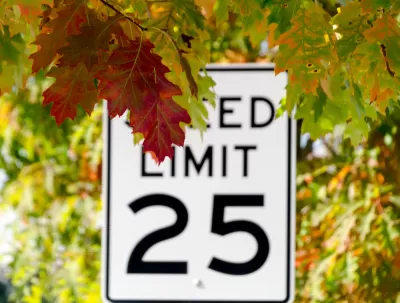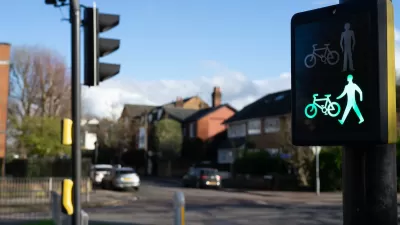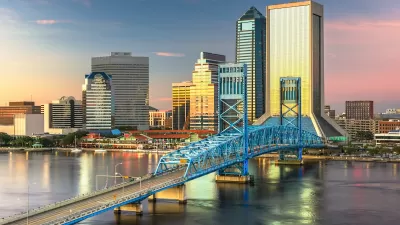A change in the city’s speed limits has been shown to reduce the likelihood of injuries during collisions.

A new study from the Insurance Institute for Highway Safety (IIHS) reveals that lowering speed limits on Seattle streets, part of the ‘Safe System’ approach that prioritizes road design and policies that limit the damage caused by human error, improved safety. “In downtown Seattle, lowering default speed limits reduced the likelihood that a crash would involve an injury by a fifth on arterial roads, IIHS researchers found. Outside of the city center, where the new limits were less consistently implemented and publicized, there were smaller injury reductions, but these were not statistically significant.”
The study credits the success in part to the city’s information campaign. “To make drivers aware of the change, the city conducted a public outreach campaign and installed gateway signs indicating the new citywide limits on arterial roads into the city, highway off-ramps and ferry terminals,” and installed new 25 mph signs on downtown arterials.
The study is the first to attempt to quantify the effect of lower speed limits on injury rates, not just on peeding. As the press release explains, “Higher speeds make crashes more likely by reducing the time a driver has to react and increasing the distance required to stop the vehicle. Higher speeds also increase the energy involved in a crash, raising the odds of an injury.”
FULL STORY: Lowering speed limits makes Seattle streets safer

Study: Maui’s Plan to Convert Vacation Rentals to Long-Term Housing Could Cause Nearly $1 Billion Economic Loss
The plan would reduce visitor accommodation by 25,% resulting in 1,900 jobs lost.

North Texas Transit Leaders Tout Benefits of TOD for Growing Region
At a summit focused on transit-oriented development, policymakers discussed how North Texas’ expanded light rail system can serve as a tool for economic growth.

Why Should We Subsidize Public Transportation?
Many public transit agencies face financial stress due to rising costs, declining fare revenue, and declining subsidies. Transit advocates must provide a strong business case for increasing public transit funding.

How to Make US Trains Faster
Changes to boarding platforms and a switch to electric trains could improve U.S. passenger rail service without the added cost of high-speed rail.

Columbia’s Revitalized ‘Loop’ Is a Hub for Local Entrepreneurs
A focus on small businesses is helping a commercial corridor in Columbia, Missouri thrive.

Invasive Insect Threatens Minnesota’s Ash Forests
The Emerald Ash Borer is a rapidly spreading invasive pest threatening Minnesota’s ash trees, and homeowners are encouraged to plant diverse replacement species, avoid moving ash firewood, and monitor for signs of infestation.
Urban Design for Planners 1: Software Tools
This six-course series explores essential urban design concepts using open source software and equips planners with the tools they need to participate fully in the urban design process.
Planning for Universal Design
Learn the tools for implementing Universal Design in planning regulations.
Ascent Environmental
Borough of Carlisle
Institute for Housing and Urban Development Studies (IHS)
City of Grandview
Harvard GSD Executive Education
Toledo-Lucas County Plan Commissions
Salt Lake City
NYU Wagner Graduate School of Public Service





























